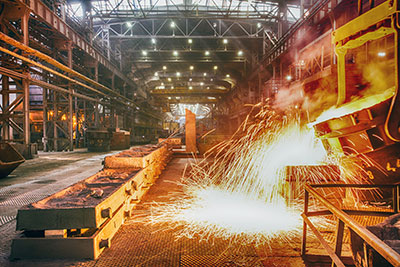Soldering of titanium alloys

Titanium and its alloys, heated to a sufficiently high temperature, actively interacts with many materials, and in particular with gases with which the parts can be in contact with soldering: with oxygen, nitrogen, hydrogen, oxide and carbon dioxide, water vapor, ammonia. This interaction is accompanied by the diffusion of the constituent element into the depth of the material to be soldered, which leads to a decrease in its mechanical properties, and often to a complete loss of efficiency. The rate of such interaction of titanium with gases depends on the temperature and composition of the alloy, but it can be considered that at temperatures not exceeding 500 ° C, it practically does not occur. Up to higher temperatures, critical products can be heated during soldering only in an atmosphere of inert gases (argon, helium) and in a vacuum. For most titanium alloys, the maximum permissible heating temperature for soldering is 10000C. Exceeding this temperature usually leads to a strong grain growth and a decrease in mechanical properties.
Titanium alloys are classified according to their structure, which they have in the normalized state α-, α + β- and β-alloys.
For brazed structures, thermally non-reinforced α- or pseudo α-alloys BT1 (technical titanium)
VT5, VT5-1, OT4, OT4-1, VT20 all these alloys are insensitive to thermal action during low-temperature brazing and are not sensitive to thermal effects during high-temperature brazing.
Α + β-alloys (ВТ6С, ВТ6, ВТ9, ВТ3-1) can be used both in the annealed and thermally hardened state.
The expediency of thermal hardening of soldered joints is not yet sufficiently studied.
Titanium alloys with a β-structure have not yet been widely used, especially for brazed products.
As is known, titanium is coated with a dense protective oxide film TiO2, which prevents wetting with molten solders.
In the case of low-temperature titanium soldering, wettability is provided by nickel intermediate metal coatings applied by galvanic or chemical methods, and copper applied by galvanic treatment. It is also known tinning, immersion in a melt, heated to a temperature of 700 - 750 ° C, followed by low-temperature soldering.
When high-temperature brazing, two processes can occur-the formation of TiO2, and the dissolution of oxygen in titanium. If the concentration of oxygen in the surrounding gas medium is small and the temperature is high enough, then the speed of the second process is greater than the first. Not only does TiO2 not form again, but the existing film is destroyed as a result of the dissolution of oxygen in the titanium, which was part of its composition. The surface of titanium is freed from the oxide film, and it is well wetted with solders.
In practice, to obtain a surface with a well-wettable solders, and at the same time, to prevent unacceptable contamination with oxygen and other gases, a temperature above 800 ° C is required, the residual pressure for soldering in vacuum 10-5-10-4 mm Hg; When soldering in an argon atmosphere, an additional purification by passing it through a titanium sponge or shavings heated to 900C is usually used. When soldering in containers, the titanium gas absorber is placed directly in the soldering container in such a way that the argon entering the container first passes through the volume filled with the absorber.
The use of leaky protective shield containers is equivalent to a significant increase in the depth of the vacuum or the degree of purification of argon. Such screens hinder the access of oxygen and other active gases from the volume outside the screen to its internal volume, where the titanium parts are located. As a result of the absorption of active gases by titanium, their actual concentration in the soldering zone is substantially reduced.


